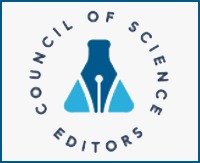An Integrated Analysis Of Microbial Profiles, Drug Resistance And Socioeconomic Factors In Women With Diabetic Foot Ulcers
DOI:
https://doi.org/10.65327/kidneys.v14i4.573Keywords:
Diabetes mellitus, Diabetic foot ulcers, antibiotic resistance, bacterial pathogensAbstract
Diabetic foot ulcers (DFUs) can lead to significant health issues, including amputations and mortality. The prevalence of diabetes is notably higher among middle-aged and elderly women, especially those in the 61-70 age group, with socioeconomic disparities significantly impacting access to care. This study highlights the severe complications of DFUs in patients with diabetes mellitus (DM), particularly among women from low-income groups, where limited access to healthcare, lack of awareness, and delayed medical interventions exacerbate the condition. The financial burden of managing chronic wounds, particularly in rural areas, further complicates the already substantial healthcare costs associated with diabetes care. The analysis involved screening 171 patients to identify bacterial pathogens and determine their antibiotic resistance patterns. The results indicated that Gram-positive bacteria, predominantly Staphylococcus aureus (72 %), and Gram-negative bacteria, including Klebsiella sp., and Pseudomonas sp., made up the remaining 28%. These infections are often polymicrobial, posing treatment challenges due to their resistance to commonly used antibiotics. Antibiotic susceptibility tests revealed varying degrees of resistance among the bacterial isolates. Particularly E. coli and Klebsiella sp. showed sensitivity to tested whereas Pseudomonas sp., and Acinetobacter sp. exhibited high levels of resistance. These findings emphasize the importance of precise diagnostic testing and the selection of appropriate antibiotic regimens to effectively manage these infections. Overall, this study underscores the critical need for targeted interventions addressing socioeconomic disparities and improving access to healthcare for at-risk populations. It also stresses the necessity for tailored antibiotic treatments to combat the complex bacterial infections associated with DFUs.
Downloads
References
Magliano DJ, Boyko EJ, IDF Diabetes Atlas 10th edition scientific committee. IDF Diabetes Atlas. 10th ed. International Diabetes Federation, Brussels; 2021. PMID: 35914061.
McDermott, K., Fang, M., Boulton, A. J., Selvin, E., & Hicks, C. W. (2023). Etiology, epidemiology, and disparities in the burden of diabetic foot ulcers. Diabetes care, 46(1), 209-221. https://doi.org/10.2337/dci22-0043
Lawrence A Lavery, Easton C Ryan, Junho Ahn, Peter A Crisologo, Orhan K Oz, Javier La Fontaine, Dane K Wukich, The Infected Diabetic Foot: Re-evaluating the Infectious Diseases Society of America Diabetic Foot Infection Classification, Clinical Infectious Diseases, Volume 70, Issue 8, 15 April 2020, Pages 1573–1579, https://doi.org/10.1093/cid/ciz489.
Chen, L., Sun, S., Gao, Y., & Ran, X. (2023). Global mortality of diabetic foot ulcer: a systematic review and meta‐analysis of observational studies. Diabetes, Obesity and Metabolism, 25(1), 36-45. https://doi.org/10.1111/dom.14840
Armstrong, D. G., Swerdlow, M. A., Armstrong, A. A., Conte, M. S., Padula, W. V., & Bus, S. A. (2020). Five year mortality and direct costs of care for people with diabetic foot complications are comparable to cancer. Journal of foot and ankle research, 13(1), 16. doi:10.1186/s13047-020-00383-2
Chammas, N. K., Hill, R. L. R., & Edmonds, M. E. (2016). Increased mortality in diabetic foot ulcer patients: the significance of ulcer type. Journal of diabetes research, 2016(1), 2879809. doi:10.1155/2016/2879809
Zhang, P., Lu, J., Jing, Y., Tang, S., Zhu, D., & Bi, Y. (2017). Global epidemiology of diabetic foot ulceration: a systematic review and meta-analysis. Annals of medicine, 49(2), 106-116. doi:10.1080/07853890.2016.1231932
Frykberg, R. G., & Banks, J. (2015). Challenges in the treatment of chronic wounds. Advances in wound care, 4(9), 560-582. doi:10.1089/wound.2015.0635
Liu, C., Ponsero, A. J., Armstrong, D. G., Lipsky, B. A., & Hurwitz, B. L. (2020). The dynamic wound microbiome. BMC medicine, 18(1), 358. doi:10.1186/s12916-020-01820-6
Dunyach-Remy, C., Ngba Essebe, C., Sotto, A., & Lavigne, J.-P. (2016). Staphylococcus aureus Toxins and Diabetic Foot Ulcers: Role in Pathogenesis and Interest in Diagnosis. Toxins, 8(7), 209. https://doi.org/10.3390/toxins8070209
Pouget, C., Dunyach-Remy, C., Pantel, A., Schuldiner, S., Sotto, A., & Lavigne, J.-P. (2020). Biofilms in Diabetic Foot Ulcers: Significance and Clinical Relevance. Microorganisms, 8(10), 1580. https://doi.org/10.3390 /microorganisms8101580
Atlaw, A., Kebede, H. B., Abdela, A. A., & Woldeamanuel, Y. (2022). Bacterial isolates from diabetic foot ulcers and their antimicrobial resistance profile from selected hospitals in Addis Ababa, Ethiopia. Frontiers in Endocrinology, 13, 987487. https://doi.org/10.3389/fendo.2022.987487
Holt, J.G., Krieg, N.R., Sneath, P.H.A., Stanley, J.T. and William, S.T. (1994) Bergey’s Manual of Determinative Bacteriology. Williams and Wilikins, Baltimore
Wayne, P. A. (2011). Clinical and laboratory standards institute. Performance standards for antimicrobial susceptibility testing.
Anjana RM, Deepa M, Pradeepa R, et al. Prevalence of diabetes and prediabetes in 15 states of India: results from the ICMR–INDIA B population-based cross-sectional study. Lancet Diabetes Endocrinol. 2017; 5(8): 585–596. doi:10.1016/s2213-8587(17)30174-2
Alexandra Kautzky-Willer, Jürgen Harreiter, Giovanni Pacini, Sex and Gender Differences in Risk, Pathophysiology and Complications of Type 2 Diabetes Mellitus, Endocrine Reviews, Volume 37, Issue 3, 1 June 2016, Pages 278–316, https://doi.org/10.1210/er.2015-1137
Muilwijk, M., Bolijn, R., Galenkamp, H., Stronks, K., van Charante, E. M., & van Valkengoed, I. G. (2022). The association between gender-related characteristics and type 2 diabetes risk in a multi-ethnic population: The HELIUS study. Nutrition, Metabolism and Cardiovascular Diseases, 32(1), 142-150. https://doi.org/10.1016/ j.numecd.2021.09.015
Hammarström, A., & Annandale, E. (2012). A conceptual muddle: an empirical analysis of the use of ‘sex’and ‘gender’in ‘gender-specific medicine’journals. PLoS One, 7(4), e34193. https://doi.org/10.1371 /journal.pone. 0034193
Ghorpade, A. G., Majgi, S. M., Sarkar, S., Kar, S. S., Roy, G., Ananthanarayanan, P. H., & Das, A. K. (2013). Diabetes in rural Pondicherry, India: a population-based studyof the incidence and risk factors. WHO South-East Asia journal of public health, 2(3-4), 149-155. DOI: 10.4103/2224-3151.206761
Danaei G, Finucane MM, Lu Y, Singh GM, Cowan MJ, Paciorek CJ, Lin JK, Farzadfar F, Khang YH, Stevens GA, Rao M. National, regional, and global trends in fasting plasma glucose and diabetes prevalence since 1980: systematic analysis of health examination surveys and epidemiological studies with 370 country-years and 2· 7 million participants. The lancet. 2011 Jul 2;378(9785):31-40. https://doi.org/10.1016/S0140-6736(11)60679-X
Williams, Rhys & Colagiuri, Stephen & Chan, Joe & Gregg, Edward & Ke, Calvin & Lim, Lee-Ling & Yang, Xilin. (2019). IDF Atlas 9th Edition 2019.
Indian Council of Medical Research, Public Health Foundation of India, and Institute for Health Metrics and Evaluation. India: Health of the Nation’s state – The India State-level Disease Burden Initiative. New Delhi, India: ICMR, PHFI, and IHME; 2017.
Nanda, M., & Sharma, R. (2023). A comprehensive examination of the economic impact of out-of-pocket health expenditures in India. Health policy and planning, 38(8), 926-938. https://doi.org/10.1093/heapol/czad050
Wagner FW. The Dysvascular Foot: A System for Diagnosis and Treatment. Foot & Ankle. 1981;2(2):64-122. doi:10.1177/107110078100200202
Andrew J.M. Boulton, David G. Armstrong, Matthew J. Hardman, Matthew Malone, John M. Embil, Christopher E. Attinger, Benjamin A. Lipsky, Javier Aragón-Sánchez, Ho Kwong Li, Gregory Schultz, Robert S. Kirsner; Diagnosis and Management of Diabetic Foot Infections. ADA Clinical Compendia 1 January 2020; 2020 (1) https://doi.org/10.2337/db2020-01
Downloads
Published
How to Cite
Issue
Section
License
Copyright (c) 2025 Emmanuel Rajkumar S, Nimithap S, V. R. Anjana, Ravindran Jaganathan, Muthukrishnan Pallikondaperumal, Subha Chandraraj, Manivannan Govindasamy, Venkatesan Srinivasan

This work is licensed under a Creative Commons Attribution 4.0 International License.

 ISSN
ISSN  ISSN
ISSN 


























